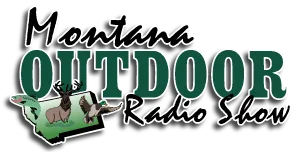BILLINGS – Montana’s general big game hunting season is in its final two weeks. After the first four weeks of the season, mule deer harvests have been below average for south-central Montana, while white-tailed deer and elk harvests have been similar to or above average.
Hunters in south-central Montana experienced mild temperatures with strong winds in some areas for the fourth weekend of the general hunting season. Hunter success rates were lower than last year over the same weekend at all four check stations. Many hunters reported signs of the “rut,” or deer breeding season. Deer harvest can increase during this time due to increased deer movement and activity.
Over the fourth weekend of the general hunting season, check stations operated on Sunday only in Big Timber, Lavina and Billings. The Columbus check station operated on both Saturday and Sunday. So far this season, 3,017 hunters have visited check stations across the region, an increase from the 2023 hunting season. Although mule deer harvest rates are generally below average, they have still been the most abundantly harvested big game animal in south-central Montana, with 295 total coming through the 4 check stations so far this season. A total of 243 white-tailed deer, 188 elk and 54 antelope have also been checked at the check stations this season.
All hunters are required to stop at game check stations, regardless of success. Check stations in Big Timber, Lavina and Billings will operate only on Sunday until closing weekend, when these stations will operate on both Saturday, Nov. 30, and Sunday, Dec. 1. The Columbus check station will operate both Saturday and Sunday every weekend of the general season. Biological game check stations capture important hunter and harvest trends and help FWP with wildlife management.
Hunting regulations for deer, elk and antelope are available online here.
Chronic Wasting Disease
Chronic Wasting Disease (CWD) is a 100 percent fatal disease that infects members of the deer family, including both species of deer, elk and moose. Although testing harvests animals for CWD is voluntary in most places in Montana, hunting is the primary tool for monitoring and managing the spread of CWD and hunters are critical to conservation efforts across the state. Hunters can visit a CWD sampling station to have animals tested, or collect and submit their own samples. In south-central Montana, there are CWD sampling stations in Billings, Big Timber, Harlowton, Lavina and Columbus.
Report Wildlife Violations
Anyone who witnesses a poaching crime should report it to the local FWP game warden. To view the warden district map, click here.
Poaching includes:
- hunting out of season or at night using spotlights
- taking more than one’s legal limit
- nonresidents who purchase resident licenses
- professional and commercial poachers who illegally offer outfitter and guide services.
Callers may remain anonymous and may be eligible for a cash reward. For more information, go to fwp.mt.gov/enforcement/
Big Timber Check Station
Once again, hunter success rate was highest at the Big Timber check station at 41%. However, the success rate for the fourth weekend of the general season this year was below the success rate over the same weekend last year and below the long-term average. This check station also saw the fewest number of hunters over the fourth weekend at 133, which is lower than hunter numbers for the same weekend in recent years.
Elk and white-tailed deer harvests were consistent with long-term averages for the fourth weekend of the season. This check station has seen the highest cumulative number of harvested white-tailed deer, mule deer and antelope for the region, with 68 total harvested whitetails, 83 total harvested mule deer and 29 total harvested antelope so far this season. Cumulative mule deer harvest, however, remains below average for this check station.
Columbus Check Station
The Columbus check station operated on both Saturday and Sunday over the fourth weekend of the general season. A total of 178 hunters visited this check station over the weekend, which is up significantly from the 109 hunters that visited this check station over the same weekend last year.
Cumulative harvest for both deer species is below average for this check station, while cumulative elk harvest is slightly above average. Despite lower harvest rates, mule deer have still been the most abundantly harvested species at this check station, with 73 total so far this season.
Cumulative hunter numbers are significantly below average for this check station. A total of 588 hunters have visited the Columbus check station so far this year, compared to the long-term average of 710.
Lavina Check Station
Typically, the Lavina check station is the busiest in the region. Over the fourth weekend, however, more hunters visited the Columbus check station as hunter numbers were below average for the weekend at the Lavina check station. However, cumulatively for the season, 1,056 hunters have visited the Lavina check station, making it the busiest in the region.
The most harvested elk have come through this check station so far this season, at 60 total elk. Of these 60 elk, 40 have been bulls. Bull harvest has been above average for the season, while antlerless elk harvest has been below average for the season.
Cumulative elk and white-tailed deer harvests have been similar to averages, while mule deer harvest has been below average. So far this season, only 63 mule deer have been through the Lavina check station, well below the average of 116.
Billings Check Station
Mule deer have been the mostly abundantly harvested species at the Billings check station with 76 checked so far this season. This is followed by 48 total harvested elk and 46 total harvested white-tailed deer. However, cumulative mule deer harvests remain below average for this check station. Cumulative elk harvest for this check station is higher than in recent years.
The Billings check station has been the second busiest in the region, with 744 total hunters visiting so far this season.
-fwp-
|




